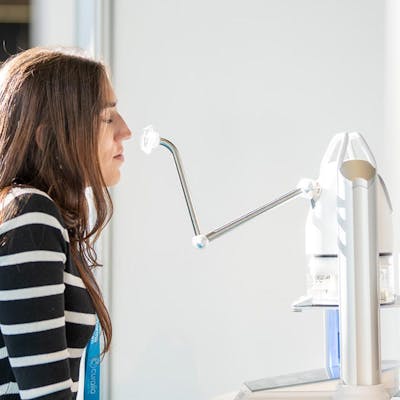Allergies can trigger chronic inflammation that leads to oxidative stress and hypoxia, contributing to the severity of allergic symptoms and the onset of potentially health-threatening complications. Optimising cellular oxygenation helps to reduce allergy symptoms and the associated consequences for the body.
Allergies, a real social phenomenon
Changes to our environment (more pollen in the air, more pollution, global warming), our lifestyles (overheated and confined homes), our hygiene measures that destabilise our immune systems... There are many causes, and they explain why more and more people are suffering from respiratory allergies.
How serious is the problem?
Allergy is considered by the WHO to be a disease in its own right, ranking 4th after cancer, cardiovascular disease and AIDS.
In France, over 30% of the population suffers from an allergic disease, with respiratory allergies at the top of the list. This figure is set to rise to 50% in the future.
What is an allergy?
Allergy is an excessive and inappropriate reaction of the immune system following contact with one or more substances foreign to the body.
These substances are then recognised as dangerous by the body and become specific allergens for the person suffering from them. They provoke inflammatory reactions that lead to a lack of cellular oxygen, which in turn aggravates the phenomenon.
This is the vicious circle of hypoxia: the cells are stressed by this lack of oxygen and all the body's functions are disrupted.
Inflammation and oxygenation
Inflammation and oxygen deprivation are correlated in most scientific studies of them - one can lead to the other and vice versa. They are two sides of the same coin.
Inflammation is the body's natural response to various aggressions, whether external, such as infections, or internal, such as cellular damage. This complex reaction involves a network of molecules and immune cells that intervene to restore homeostasis. However, behind this protective response sometimes lies a double face, a mechanism that can backfire: the induction of oxidative stress and hypoxia.
It's important to recognise that inflammation is a complex and often beneficial response by the body. However, when this response becomes chronic or excessive, it can overwhelm control mechanisms and lead to harmful consequences such as oxidative stress and hypoxia.

Inflammation and oxidative stress: when free radicals do the damage
When our bodies are confronted with inflammation, a cascade of chemical reactions is triggered, including the production of free radicals. These unstable molecules are rich in electrons and can damage healthy cell structures when produced in excess. This phenomenon is known as oxidative stress.
Free radicals attack lipids, proteins and even the DNA of cells, causing progressive deterioration and contributing to the inflammatory process. Paradoxically, while inflammation is a necessary immune response, it can also trigger a spiral of cellular damage via oxidative stress.
Hypoxia: when inflammation asphyxiates our cells
When tissues are inflamed, this can also disrupt the availability of oxygen, resulting in a condition called hypoxia. Inflammation can impair the function of blood vessels, reducing the ability of blood to carry oxygen to tissues. In addition, inflammatory cells release molecules that interfere with the cells' ability to use oxygen efficiently, even if sufficient oxygen is available.
Hypoxia can have devastating effects on cells, compromising their function and contributing to persistent inflammation. In certain conditions, such as ischaemia, where the blood supply is severely reduced, hypoxia can even lead to cell death.
A waste of energy
Hypoxia prevents the body from functioning properly metabolically, assimilating nutrients, eliminating toxins and toxic substances and producing energy.
The emunctories (liver, kidneys, skin and lungs) must increase their filtration work.
To defend itself in the face of aggression, the body must mobilise a large amount of energy, just when it is lacking.
A natural ally to relieve allergies: the Bol d'air Jacquier
The Bol d'air Jacquier provides a solution to cellular under-oxygenation.
This method uses the oxygenating properties of pine resin extract by transforming its volatile parts into oxygen carriers, to create a nebulisate.
On the one hand, haemoglobin takes on this carrier more easily than oxygen alone. Secondly, oxygen transported in this way is more easily released into hypoxic tissues and taken up by the cells. The body is simply and naturally better oxygenated, with no risk of oxidative stress linked to oxygen deficiency or excess.



